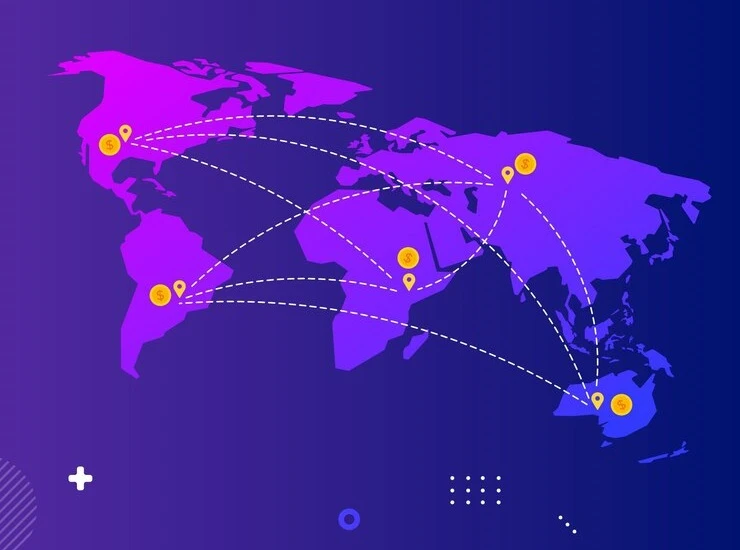Reasons Bad Translation Is Not Always the Translator’s Fault: Insights from ConveyThis
In the field of translation, rendering text in another language from a source language is more than just replacing words. Taking the style, flow, tone, and tenor of the material together at a time defines what should be a perfect translation. Contrastingly, even an advanced software no matter what, are more prone to errors in the final output because the machines are design as such that they follow a series of codes and rules whereas human translation tends toward a less error delivery when it comes to quality, it is the best. However, does that mean clients are always satisfied with the results of all human translators? Think about the following scenario.
A store owner on Shopify who wants to gain a bigger audience decides to hire a professional translator for the job of translating his blog. This is because he wants to add a new language (s) and wants to ensure that he gets a better result order than a machine translation. On accepting the job, the translator works diligently and assiduously puts in all he could. Contrary to his expectation, the shop owner was quite disappointed with the output. He then decides to get another person to handle the job. Once again, he became disappointed as the later translator had similar lines of error as the original translator.
Ever been in such a similar situation before? If yes, then you need to read this article because it is just for you!
What is a bad translation?
A bad translation is any translation that does not present parts or whole of the source text well enough in the target language the way it is intended to be. This may lead to mistranslation or conveying right ideas and messages in a wrong way. A translation that makes it difficult for readers of both languages to detect or discern which is the source or the translated is on the other way a good translation. Note that it is very possible that a translation may contain no iota of error and still be a bad one. A bad translation of your products and services will equate a bad business.
Replacing an existing human translator does not mean a standardized form of translation will be maintained and sustained in subsequent jobs done by others.
Therefore, in this blog, you will learn about a list of 3 essential elements. These elements, if and when carefully considered will help to mitigate every possibility of getting your translation ruined. These are as follow:
Element one (1): Orientate the translator about your business; knowledge transfer
Asking a builder to build your house from the scratch for you without handing over the architectural designs and description to him will be devastating.
Similarly, if you expect a translator to give you an output from his reserve of imagination without clear information on your business will lead to a disastrous and messy translation job.
You should avail the translator information about your Unique Selling Propositions (USPs), your business model, your objectives, your target audience and other crucial factors you are holding on to. Else you would be shock at what he offers because he has no magic to perform. A human translator is like a workman with necessary tools but needs clarification on what type of service you want him to render. Hoarding vital descriptions and information about your business from the translator will do more harm than good.
Human translators do better when you give them all the needed details of your business. Whenever you are trying to hire a translator next time, do not withhold important as well as minute details from him. Delivering your desired result by the translator is contingent on his acquaintance with your core objectives and visions.
Element two (2): Transmit the Dos and Don’ts from the Perspective of Locality
A professional translator should be versed in the source language as well as in the target language. It is noteworthy that even with that, he may not be an expert when it comes to the knowledge of the structural, cultural and environmental background that could possibly have bearing on the use of each of the languages. If this is so, sometimes, local readers of such translated materials may get startled and probably become offended when they come across the way and manner the translator renders or denotes certain words, phrases or expressions. Often times, translating or representing certain terms inaccurately becomes a contentious issue among people with varying opinions and do not share the same culture or tradition.
To exemplify further, the English language style of the American’s is different from that of the British. In America, ‘Vacation’ is not the same as ‘holiday’ and ‘apartments’ not same as ‘flats’. Therefore, you should let your audience become clearer to the translator and identify the dos and don’ts in English language because the Americans speaks differently. This should be done even if the source language allows for interchanging such words without changing its original meaning. This underscore the fact that even though most times, word equivalents can be found in the target language, these might not have the exact meaning, convey the right intention or produce the very right impact to get across the intended message of the business owner.
Initial guidelines ought to be given to the translator so that he can effectively handle his job and come up with a better output as he keeps in mind the religious or cultural sensitivities of the audience.
Element three (3): Let the Translator know in advance if you want a word-for-word translation
A word for word translation, also known as literal translation, is the rendering of text from the source language to the target language without putting the ‘sense’ of the of the source text into consideration. This means that the source language is translated literally without having to think of conveying the correct ideas of it. The image below depict an example of how the sentence “How are you” in English will be rendered, word for word in the French language. In this example, you will discover that the output is not the same with how it is been used in the target language; Comment ça va
A word for word translation is not always the best. For instance, translating an idiom word for word may render the words of the source language separately but may fail to transmit the real meaning of such idiom in a whole sense.
Although it is usually not the best, yet when it comes to translating technical materials, academic papers, scientific or legal texts, it is mostly recommended. Reason is that such materials requires strict compliance and alignment with the source text with no any deviation of adding or subtracting anything from the original text.
This is not the case when translating blogs, web pages and other market inclined digital content. While the translation may not be hundred percent (100%) literal, it is usually best to convey words, phrases and expressions in a more conversational manner. ConveyThis, website translator delivers great quality translation with the option for professional translation by a human translator.
Remember that we are in the world of business today, there are different kinds of products and services. Brand names, trademarks, and motto are all what is seen around. Traditional factors as well as cultural background determines these concepts because of the fact that this products and services are socially and culturally motivated. They target the audience of a specific culture. Hence, the business potential customers and audiences’ values, traditions, customs, religious beliefs, moral principles, social and political systems, and so on tends to have influence on what is been sold.
Some business, often times, due to different reasons preferred a translation that will strictly align with the original text. If that is the case, the business owner should notify the translator earlier enough of his choice. Else, the translator may decide to render the texts in a tone and manner that he feels is right and best to convey the ideas in the source material.
At this point, if we are to summarize what has been discussed so far, a translator may deliver a poor translation work if he is been denied access to necessary information as well as proper orientation regarding your vision, target audience, scope of the business and stated objectives because proper rendition and representation of your brand names, trademarks, and motto from the source text and culture to the other language aiming at an audience in that other culture will speak a lot about your brand.
It is also advisable to have someone with prior knowledge of what your business and its sector is like to handle your translation work for you because this will definitely have serious impact on what is to be delivered i.e. you may need to add that having experience in business related translation is a prerequisite for the job. Hence, next time a translator delivers a poor job for you, check if you have tried to apply the three (3) elements stated in this article before you fault the translator because a bad translation is not always the translator’s fault.
Translation, far more than just knowing languages, is a complex process.
By following our tips and using ConveyThis , your translated pages will resonate with your audience, feeling native to the target language.
While it demands effort, the result is rewarding. If you’re translating a website, ConveyThis can save you hours with automated machine translation.
Try ConveyThis free for 7 days!



